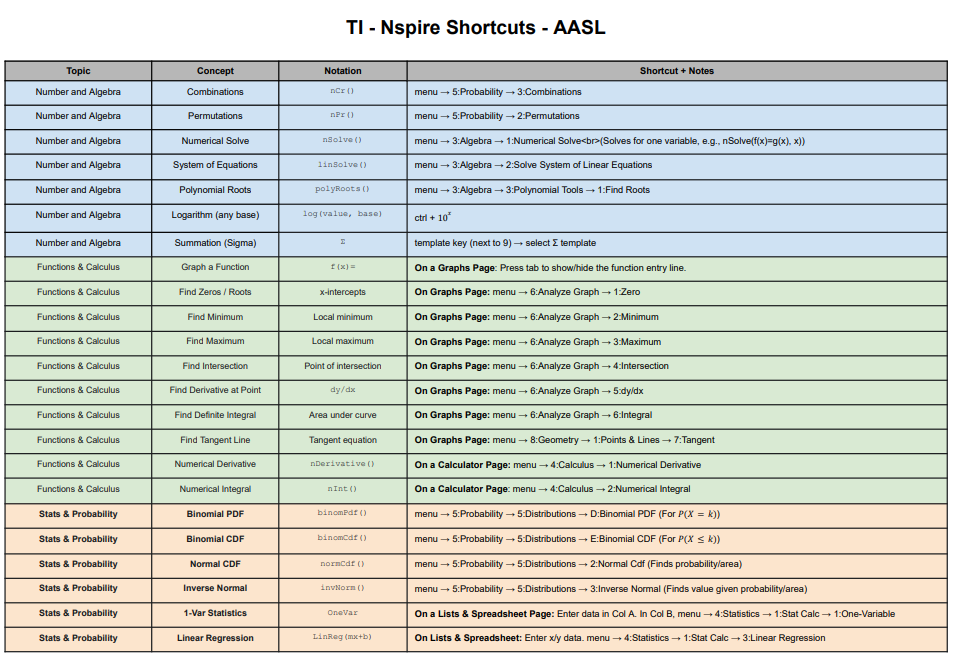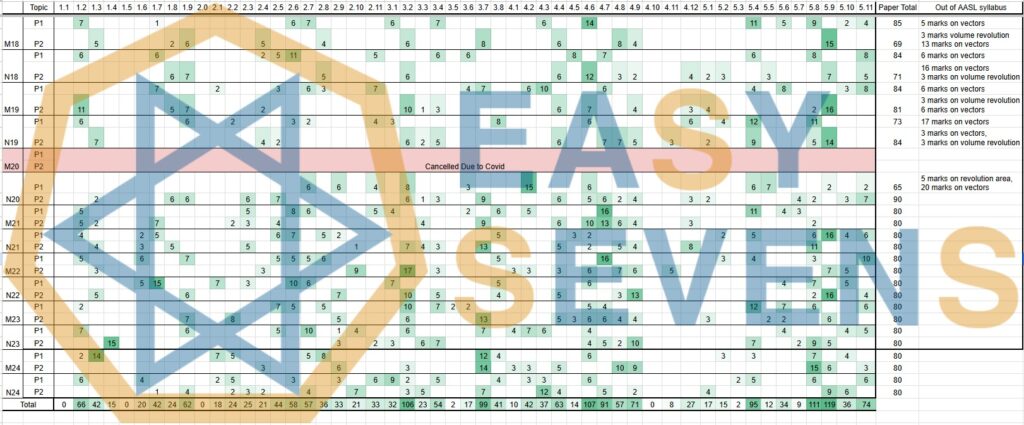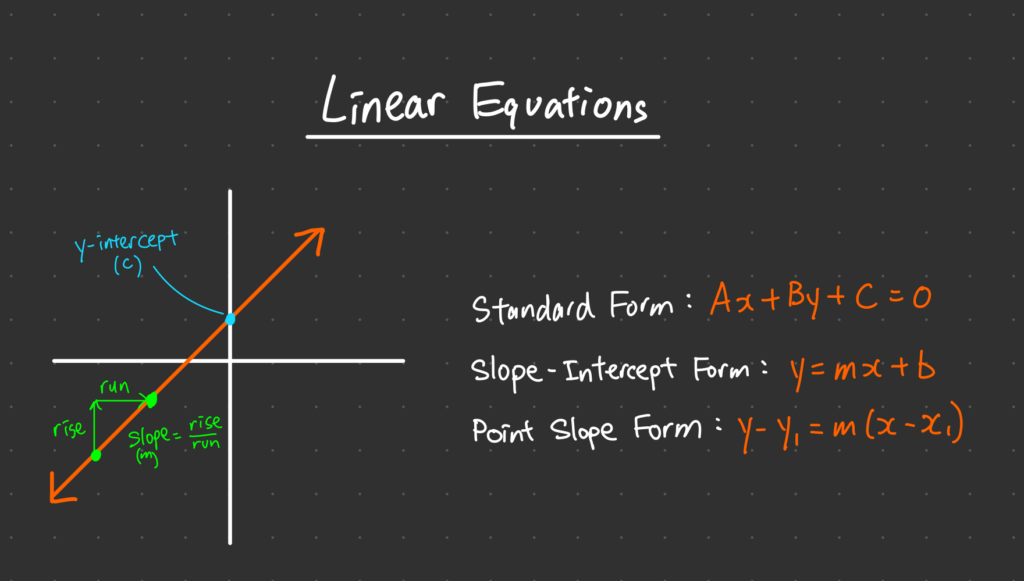The exam hall doors have closed. Pencils are down. For thousands of IB Mathematics: Analysis and Approaches Standard Level (AA SL) students, the May 2025 examination session has concluded, leaving a whirlwind of emotions in its wake. Across the globe, and particularly within vibrant student communities like r/IBO subreddit, the discussions are buzzing. Relief, anxiety, frustration, and a shared sense of having faced a monumental challenge – these are the immediate takeaways. This year’s papers, particularly Paper 1 for many, seem to have carved a unique spot in the annals of “tough IB exams.”
But what exactly made these exams so memorable (or for some, infamous)? Our IB math tutor dives deep into the post-exam reactions, unpack the most talked-about questions, and offer some valuable insights for IB students navigating the aftermath and for those looking ahead.
A Rollercoaster of Reactions: What Students Are Saying About the IB AA SL May 2025 Papers
The sentiment is palpable: these exams were a different breed. Many students, even those who diligently prepared with past papers, felt the May 2025 AA SL exams threw unexpected curveballs.
AASL May 2025 Paper 1: “Diabolical,” “Hellish,” “A War Zone” – The Common Verdict
The term “diabolical” surfaced repeatedly in student discussions regarding Paper 1. One student on r/IBO voiced a common feeling: “Paper 1 was diabolical. I have never seen such a difficult maths exam in my entire life.” This wasn’t an isolated experience. Students reported feeling like “guinea pigs,” encountering question types and difficulty levels that seemed to deviate significantly from previous years. The phrase “absolute cinema” was used, dripping with irony, to describe the ordeal.
Many students felt the time constraint of 1 hour 30 minutes was insufficient for the complexity and length of the questions. “Felt like I had just walked out of a war after P1…eyes wide from the horror that happened in that test room,” one student shared, capturing the intensity of the experience. The emotional impact was clear, with some students admitting they “literally cried WHILE writing it.”
IB Math AA May 2025 Paper 2: A Mixed Bag of Challenges and “Spiritual Journeys”
While Paper 1 bore the brunt of the criticism for many, Paper 2 wasn’t without its own set of hurdles. Some students found it “not as difficult compared to Paper 1,” yet still noted that “the type of questions were still not the same as usual in past papers,” as one commenter explained. Others, however, found Paper 2 to be the tougher of the two. One student, who reported consistently scoring 7s on past papers, exclaimed, “what the F**K was that P2.”
Time pressure remained a significant factor. A commenter described Paper 2 questions as “manageable but it was soooo long bro 9 whole questions with each one divided into one million subquestions there was no time at all.” This sentiment was echoed by another student: “no one finished the whole paper on time.” The feeling of extensive preparation not fully translating into exam performance left many students disheartened.
IB Math AA SL May 2025 Timezone Turmoil: Did TZ1 or TZ2 Have It Harder?
As is common with IB exams, experiences varied across timezones.
TZ1 students often highlighted the extreme difficulty of Paper 1, with its infamous normal distribution question. One TZ1 student bluntly asked, “WTF is P1 Q6…?”
TZ2 students also faced their share of challenges. While some found TZ2 P1 “hellish” and P2 “very doable,” others had the opposite experience. One student found Paper 1 “light” but Paper 2 “straight from hell.”
This variation underscores the subjective nature of exam difficulty and how different question styles can resonate differently with individual strengths and preparation.
Unpacking the “Problem Questions”: A Closer Look at IB Math AA SL May 2025 Sticking Points
Several specific questions became focal points of student frustration and discussion. Their difficulty often stemmed from unfamiliar phrasing, multi-step reasoning, or the need to apply concepts in novel ways – sometimes without the aid of a calculator where it might have been expected.
The Notorious AASL May 2025 Paper 1 Q6: Normal Distribution Without a Calculator
This question was a major pain point for many, particularly in TZ1. Some students expressed that “no one (including me) in my math class knew how to do it with no calculator💔.” The challenge? It required a deep conceptual understanding of normal distribution properties, such as:
Knowing that roughly 68% of data falls within one standard deviation (σ) of the mean (μ), 34% on each side.
Using the z-score formula: z = (x – μ) / σ.
Recognizing symmetry in the normal distribution curve.
Hypothetical Example: Imagine a question stated: “For a normally distributed variable X with mean μ and standard deviation σ, find P(X < μ – σ) without a calculator.”
Approach: You’d need to recall that 50% of data is below the mean. Approximately 34% of data is between μ – σ and μ.
Therefore, P(X < μ – σ) = P(X < μ) – P(μ – σ < X < μ) ≈ 0.50 – 0.34 = 0.16.
This reliance on memorized percentages and conceptual manipulation, rather than GDC functions, caught many off guard.
IB Math AASL May 2025 3D Conundrum: Geometry Puzzles That Baffled
Geometry, especially when venturing into three dimensions, proved tricky.
Paper 1, Question 9 (Indonesia/TZ unspecified): Described by a student as “about the cylinder inside the sphere with a triangle on it,” this question stumped even high-achieving students. Complex 3D visualization combined with multiple geometric properties likely made this a formidable challenge.
Paper 2, Jetski/Lighthouse (TZ1 & apparently elements in TZ2): This question, often involving bearings, was criticized for its potentially misleading 3D diagram. One commenter lamented, “WHY DID THEY F**KING MAKE IT A 3D DIAGRAM THEY COULDVE JUST MADE IT 2D AND LESS CONFUSING.”
Binomial Distribution & Other Surprises
Binomial distribution questions in the IB Math AASL May 2025 exams also presented difficulties, particularly when they required solving for ‘n’ (the number of trials) as mentioned by a student for Paper 2, or involved complex interpretations as implied by discussions around Q8 P2. Unfamiliar phrasing or questions requiring students to “make your own function” (as one student described a bouncing ball question) added to the sense of unpreparedness.
Time Pressure: The Unseen Enemy
Beyond individual question difficulty, the sheer volume of work within the 1.5-hour timeframe was a consistent complaint in the IB Math AASL May 2025 exams. As one student noted for Paper 1, it “felt like there was genuinely no time to complete all the questions.” This time crunch exacerbates stress and can lead to careless errors even on questions students might otherwise solve. Many M25 students felt the papers were not “made as 1hr 30min exams,” according to online discussions.
The Emotional Toll: Beyond the Exam Hall
The aftermath of such challenging exams isn’t just about marks; it’s about the emotional and psychological impact on students.
“Two Years of Hard Work Gone?”: Validating Student Feelings
A profound sense of disappointment and frustration was evident. One student’s comment, “bro😭😭 it’s over… 2 years of hard work is all gone bc of one exam😭,” resonated with many. This feeling is understandable. IB students invest enormous time and effort, and when an exam feels disproportionately difficult or unfair, it can be demoralizing. Comments like “Bye bye uni offers, hello community college” highlight the very real anxieties tied to these high-stakes assessments. It’s crucial for students in Hong Kong and elsewhere to acknowledge these feelings as valid.
The Hope for IB Math AASL May 2025 Exams Lower Grade Boundaries: A Numbers Game?
Naturally, the difficulty of the exams has led to widespread calls and hopes for lower grade boundaries. A petition on Change.org (mentioned in several online comments) garnered significant signatures, reflecting the collective student concern. One student expressed confidence: “This time the boundaries will certainly be lower than usual since the two papers were really hard.” While petitions voice student sentiment, the IBO determines grade boundaries based on overall candidate performance to maintain consistent standards year on year. If the papers were indeed harder for the entire cohort, this will likely be reflected in the boundaries.
Moving Forward: Strategies for IB Students in Hong Kong
Whether you’re an M25 student awaiting results or an M26 student looking ahead, there are constructive ways to move forward.
Reflecting, Not Dwelling: Processing Your Exam Experience
For M25 students:
Acknowledge your effort: You prepared and faced a challenge. That in itself is an accomplishment.
Discuss (constructively): Sharing experiences with peers on platforms like r/IBO or with classmates can be validating. However, avoid getting bogged down in endless “what ifs.”
Focus on what you can control: This now includes your other exams, IAs, and future plans.
The Power of the IA: Can It Be a Grade-Saver?
Your Internal Assessment (IA) contributes 20% to your final Math AA SL grade. A strong IA can indeed help buffer a less-than-ideal exam performance. One student hoped their “IA was good enough to counteract that.” If you put solid effort into your IA, it will certainly play a positive role.
Preparing for Future IB Math AASL Exams (M26+): Lessons Learned from May 2025
For current and future IB DP and MYP students in Hong Kong:
Conceptual Understanding is Key: Rote learning of past paper solutions is insufficient. Focus on deeply understanding why formulas work and how concepts connect. The May 2025 papers showed the IB’s willingness to test this.
Embrace Diverse Problem Types: Don’t just rely on standard past paper questions. Seek out more challenging problems, perhaps from Olympiad resources (appropriately leveled) or advanced textbooks, to build flexibility in your thinking. Some students felt their teacher’s focus on “only the hardest problems” made the exam feel like “a breeze.”
Practice Non-Calculator Skills: As seen with P1 Q6, being comfortable with manual calculations, estimations, and conceptual shortcuts is vital.
Time Management Under Pressure: Simulate exam conditions frequently. Practice identifying which questions to tackle first and when to move on from a particularly stubborn problem.
Seek Support: Don’t hesitate to utilize resources like Revision Village (mentioned by some students as a preparation tool, though the exam still proved challenging for many) or other tutoring services if needed.
Support Systems: You’re Not Alone
Remember, you are part of a large community.
Teachers, School Counselors and IB Tutors: They are there to support you, both academically and emotionally.
Peer Groups: The r/IBO subreddit is a testament to the power of peer support. Sharing experiences and advice can be incredibly helpful.
Family: Lean on your family for understanding and encouragement.
A Word on Petitions and Grade Boundaries
The petition circulating reflects a strong student voice. While the IBO has its own established procedures for setting grade boundaries – typically involving statistical analysis of student performance across all papers and components to ensure fairness and consistency year-on-year – such collective expressions do highlight the perceived difficulty to the organization. The most direct influence on grade boundaries, however, will be the actual global performance data from this exam session.
Conclusion: Resilience in the Face of “Diabolical” Math
The IB AA SL May 2025 exams were undeniably a significant hurdle for many students. The reactions from the r/IBO community and beyond paint a picture of a cohort that felt tested in new and unexpected ways. Whether it was the “diabolical” Paper 1, the lengthy Paper 2, or specific “problem questions” that caused distress, the shared experience is one of intense challenge.
However, the IB journey is also about resilience. For M25 students, the hardest part is over. Focus on what’s next, trust in your preparation for other subjects, and remember your IA. For M26 students and those in MYP in Hong Kong looking ahead, take these experiences as valuable lessons. Emphasize deep conceptual understanding, practice diverse problem-solving, and build robust exam-taking strategies.
No matter the outcome, navigating these exams is a testament to your hard work and perseverance.
Frequently Asked Questions (FAQ)
Students reported Paper 1 contained unfamiliar question types, a high level of difficulty, and particularly challenging problems like a normal distribution question that had to be solved without a calculator, and complex geometry. Time pressure also exacerbated the difficulty.
Yes, common mentions include Paper 1 Question 6 (normal distribution without GDC), Paper 1 Question 9 (cylinder in a sphere with a triangle), and some Paper 2 questions involving 3D diagrams (like a jetski/lighthouse problem) and binomial distribution, often due to complexity or time constraints.
Yes, while many found the exams challenging overall, there were variations. For example, some TZ1 students particularly struggled with Paper 1, while some TZ2 students found Paper 2 more difficult, or vice-versa. This is common in IB exams.
The IBO sets grade boundaries based on global student performance to maintain standards. If the May 2025 AA SL papers were objectively harder for the entire cohort, it’s probable that the grade boundaries will be adjusted accordingly to reflect this. A student-led petition also highlights these concerns.
The IA is very important, contributing 20% to the final grade. A strong IA can significantly help in achieving a better overall result, especially if the written papers proved more challenging than anticipated.
Key takeaways include: prioritize deep conceptual understanding over rote memorization, practice a wide variety of problem types (including non-standard ones), hone non-calculator skills, and develop strong time management strategies for exam conditions.
Students can turn to their IB math tutors, teachers, school counselors, family, and peer communities like the r/IBO subreddit for academic and emotional support.




